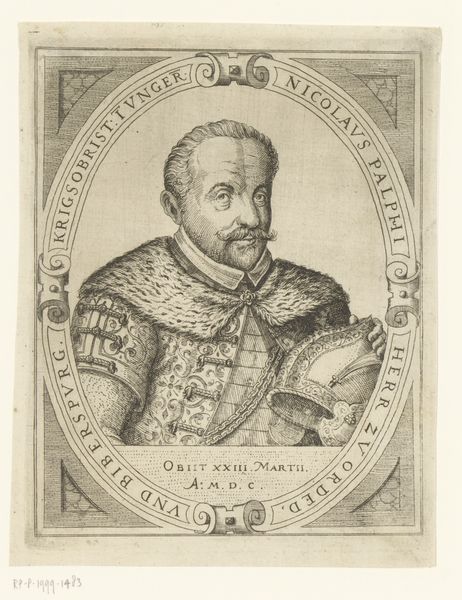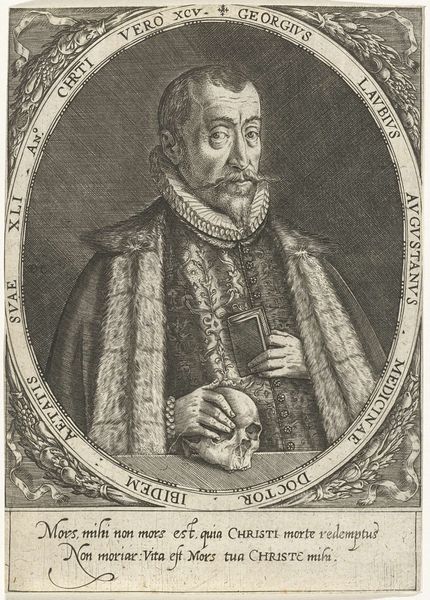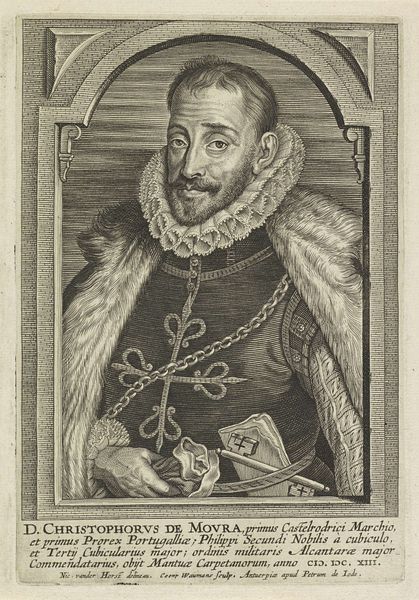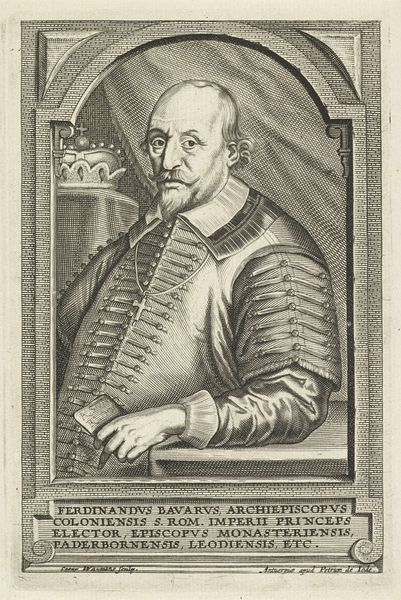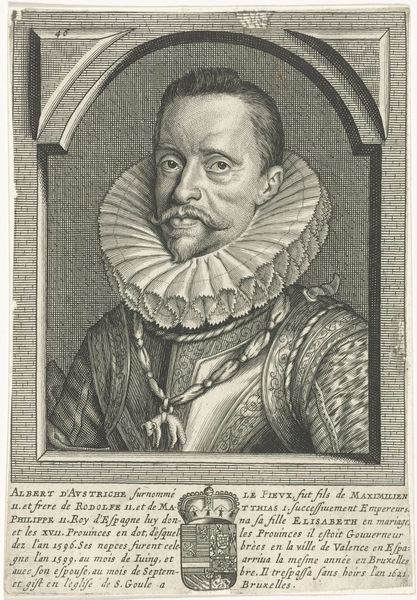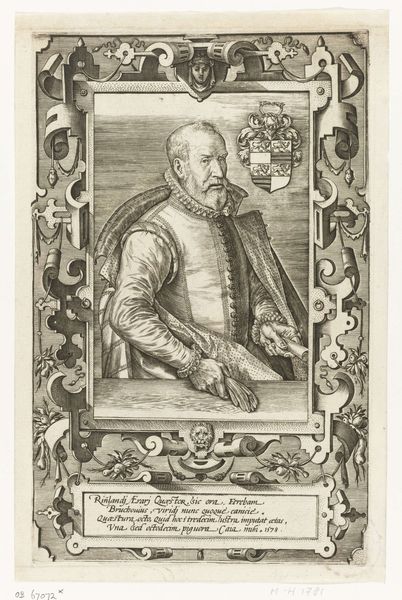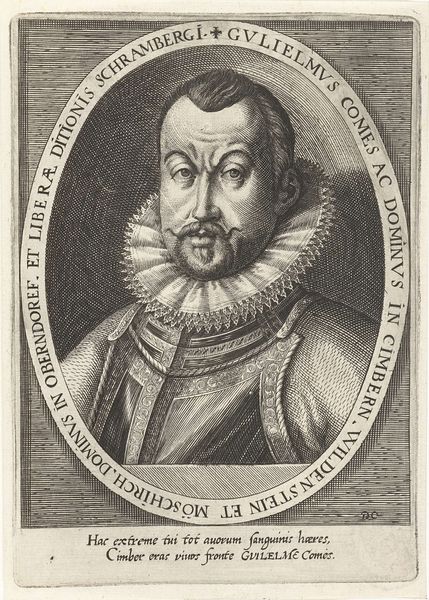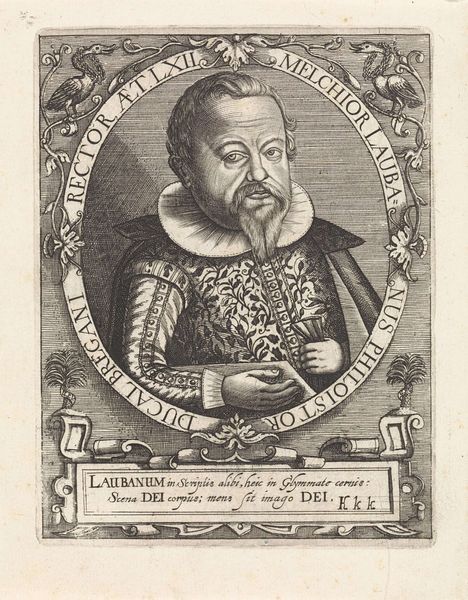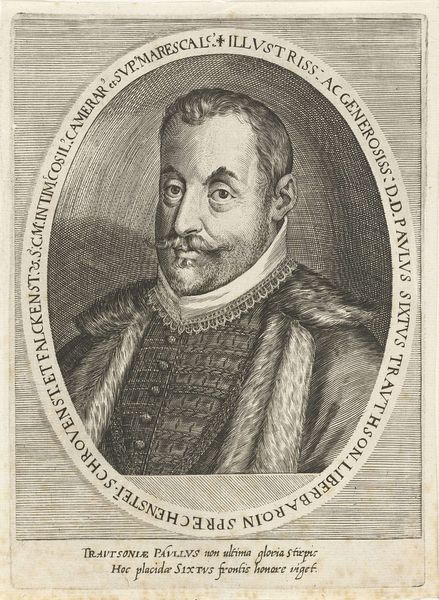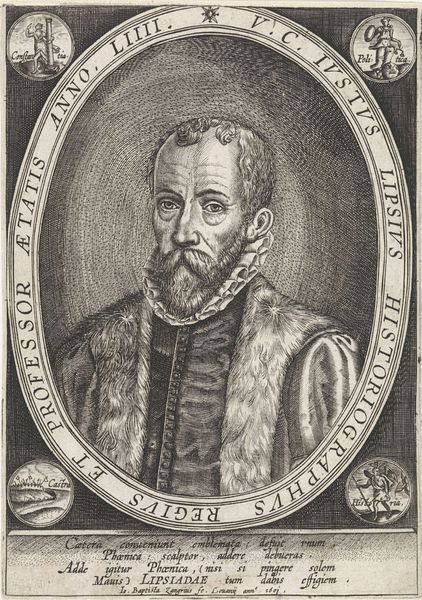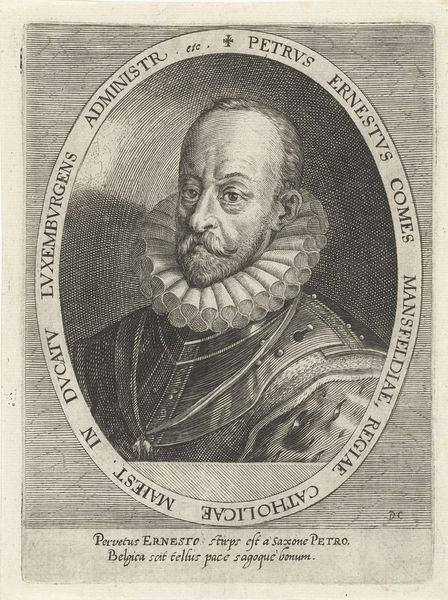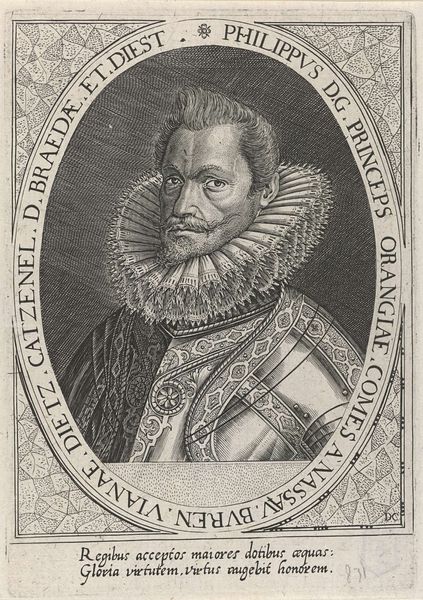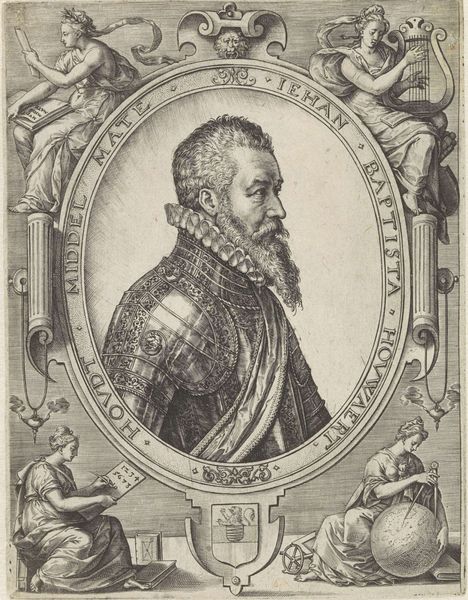
print, engraving
#
portrait
# print
#
11_renaissance
#
portrait drawing
#
engraving
Dimensions: height 206 mm, width 140 mm
Copyright: Rijks Museum: Open Domain
Dominicus Custos created this engraving of Nikolaus Pálffy, a baron, sometime before 1615. During this period, portraiture was deployed to assert power and status. Custos was part of a circle of printmakers who produced portraits for the Habsburg elite. Here, Nikolaus Pálffy is presented as a figure of authority. His armor, fur-lined mantle, and the baton he holds signify his military and aristocratic status. The inscription that surrounds the portrait, with the lower section containing a depiction of a burning building, perhaps symbolize his accomplishments and lineage. How might Pálffy have felt about the way Custos chose to portray him? Did he feel adequately represented? This portrait provides insight into the hierarchies of 16th and 17th century European society. It encourages us to reflect on how individuals sought to craft and control their public image, and how artists played a role in shaping perceptions of power.
Comments
No comments
Be the first to comment and join the conversation on the ultimate creative platform.
